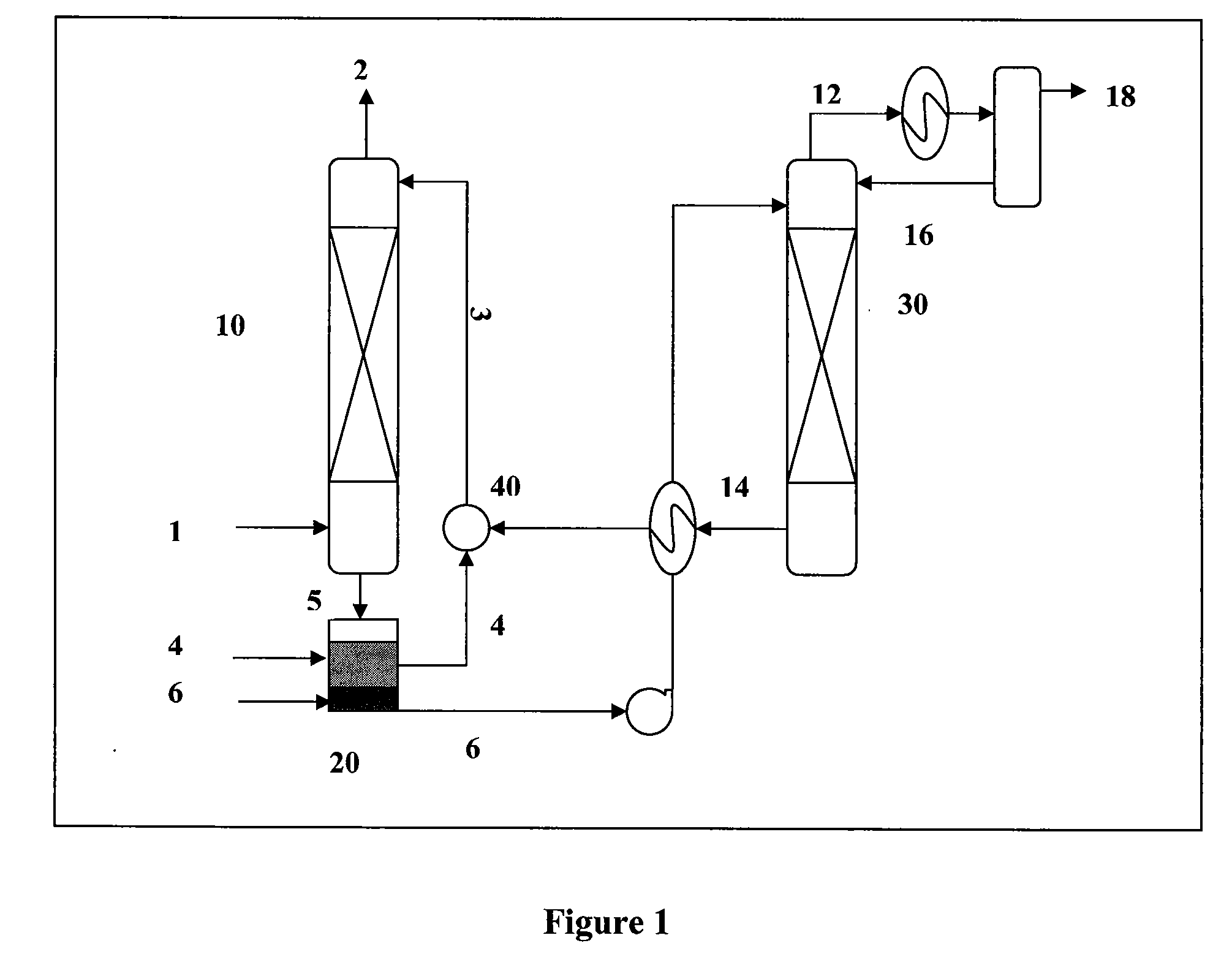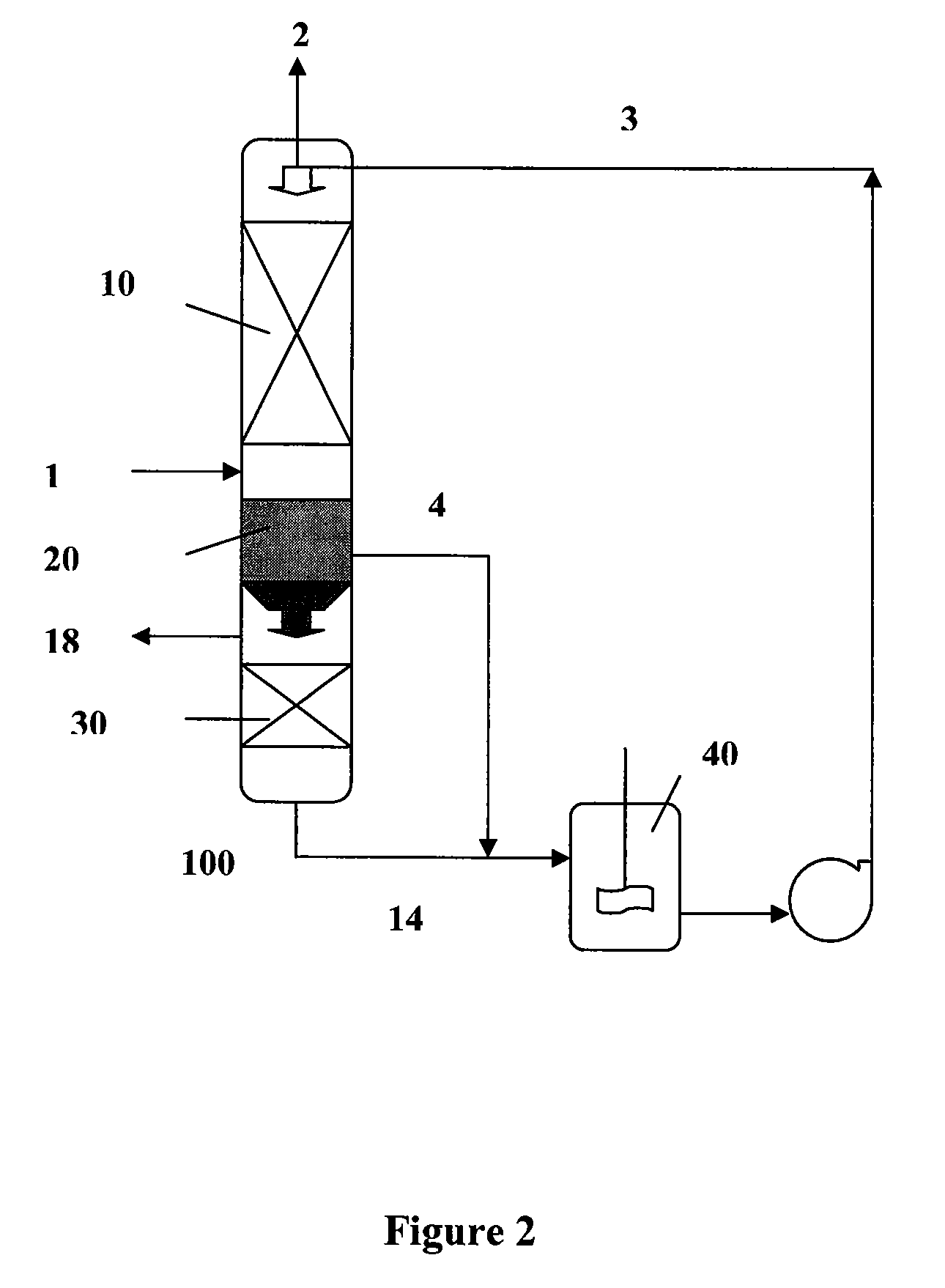Self-Concentrating Absorbent for Acid Gas Separation
a self-concentrating absorbent and gaseous mixture technology, which is applied in the direction of separation processes, liquid degasification, hydrogen sulfides, etc., can solve the problems of limited gas-liquid absorption process, and achieve the effect of reducing the overall energy cost of such deacidizing operation and increasing the absorption rate of acid gas
- Summary
- Abstract
- Description
- Claims
- Application Information
AI Technical Summary
Benefits of technology
Problems solved by technology
Method used
Image
Examples
example 1
[0087]The absorbent was made of 20% by volume of the amine, monoethanolamine (MEA), and 80% by volume of the solvent, iso-octanol. The absorbent was contacted with a gaseous mixture containing an acid gas, carbon dioxide (CO2), in a stirring cell absorption unit at about 25-45° C., 1 atm. MEA in the absorbent was concentrated spontaneously into a concentrated-amine phase, which contained MEA and the reaction product of MEA and CO2.
[0088]After the absorption, the absorbent was settled to separate by gravity the concentrated-amine phase from the remaining of the absorbent. After the separation, the remaining of the absorbent, which contains most of the iso-octanol and optionally some MEA and absorbed CO2, was cycled back into the absorption unit for reuse. In the concentrated-amine phase, the concentration of the total MEA, which includes the chemically unmodified MEA and the reaction product of MEA and CO2, was about 70% by volume.
[0089]The separated concentrated-amine phase was forw...
example 2
[0091]This example illustrates the absorption of CO2 by a carbonate aqueous solution.
[0092]An absorbent is made of carbonate aqueous solution. The absorbent is contacted with a gas mixture containing acid gas, carbon dioxide (CO2), in a stirring cell absorption unit at 50° C., 1 atm.
[0093]During the absorption, carbonate in aqueous solution reacts with CO2 to form bicarbonate. After absorption, the absorbent is cooled to 25° C. and the bicarbonate is crystallized. The bicarbonate solid phase is separated from the absorbent. It is then forwarded to a regeneration section and is treated to obtain the regenerated carbonate and CO2 by the method of heating the solid phase of bicarbonate. The regenerated carbonate is dissolved in aqueous solution and cycled back to the stirring cell absorption unit to complete the cycle.
PUM
| Property | Measurement | Unit |
|---|---|---|
| concentration | aaaaa | aaaaa |
| gravity | aaaaa | aaaaa |
| chemical modification | aaaaa | aaaaa |
Abstract
Description
Claims
Application Information
 Login to View More
Login to View More - R&D
- Intellectual Property
- Life Sciences
- Materials
- Tech Scout
- Unparalleled Data Quality
- Higher Quality Content
- 60% Fewer Hallucinations
Browse by: Latest US Patents, China's latest patents, Technical Efficacy Thesaurus, Application Domain, Technology Topic, Popular Technical Reports.
© 2025 PatSnap. All rights reserved.Legal|Privacy policy|Modern Slavery Act Transparency Statement|Sitemap|About US| Contact US: help@patsnap.com


